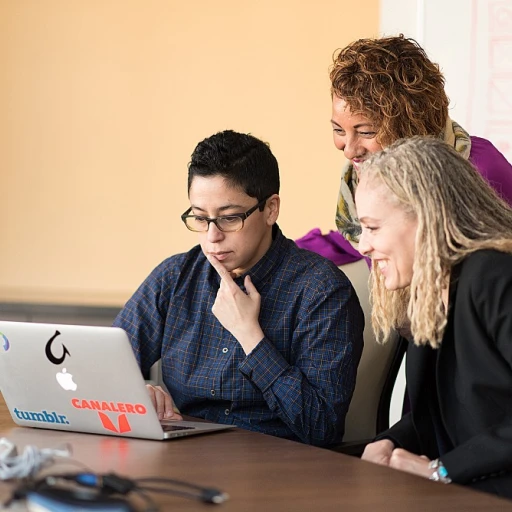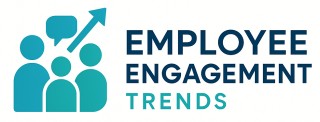
Understanding Employee Engagement in Modern Workplaces
The Ever-Evolving Landscape of Employee Engagement
In today’s dynamic work environments, understanding employee engagement goes beyond simply measuring job satisfaction. It’s about creating an inclusive and diverse culture, where every team member feels valued and empowered. In modern workplaces, engagement is intrinsically linked to the overall well-being and performance of both individuals and businesses.
Leaders and HR professionals are recognizing that to cultivate high-performing teams, they must implement strategies that prioritize inclusion and diversity. This includes understanding and adapting to changing employee needs, leveraging human-centric leadership skills, and fostering a workplace culture that promotes emotional connections. These connections, as explored in fostering emotional connection, are key to engagement as they enhance loyalty and productivity.
The role of leader-driven initiatives cannot be understated. Individuals in positions of authority must navigate the complexities of an evolving business landscape, adjusting their approaches to remain legally compliant and business accretive. The adoption of inclusive engagement strategies is also essential, as diversity mandates that all voices are heard and considered in decision-making processes. This intersection between inclusion and engagement is shaping the blueprint for future workplaces.
Furthermore, innovations such as artificial intelligence are beginning to redefine how engagement is measured and maximized. These technologies provide a data-driven approach that aids in crafting strategies tailored to specific organizational needs, optimizing performance, and improving the employee experience.
As we delve further into the intricacies of engagement, subsequent sections will explore how to effectively incorporate inclusion into your strategy, confront and overcome the challenges associated with implementation, and learn from exemplary case studies observed at premier events like SHRM Inclusion held at notable venues like the Gaylord Rockies Resort.
The Role of Inclusion in Boosting Engagement
The Power of Authentic Inclusion
Creating a workplace where every individual feels valued and included is no longer just a buzzword; it's a critical component that drives employee engagement and enhances overall business performance. At the heart of employee engagement are avenues that allow everyone, irrespective of their background, to be heard and seen. Inclusion diversity, or I&D, is more than just a strategy; it's a blueprint for success that leaders in every organization must prioritize.
SHRM Inclusion emphasizes the importance of integrating diversity and inclusion questions in the hiring process as a means to build a truly diverse culture. These practices are key to fostering a work environment where innovation thrives, and employee performance is optimized. As I&D leaders point out, the inclusion of varied perspectives catalyzes business growth and drives teams towards achieving remarkable results.
Benefits of Embracing Diversity
- Diverse Perspectives: A diverse team brings a multitude of viewpoints, enhancing problem-solving and creativity. This diversity equips businesses to better tackle complex challenges.
- Employee Satisfaction: When employees feel included, their job satisfaction levels typically rise, positively influencing retention rates and reducing turnover.
- Innovation Driver: Inclusion acts as an innovation catalyst, allowing organizations to experiment and explore new markets without the fear of failing.
- Enhanced Reputation: Organizations lauded for their inclusion efforts often find a stronger reputation, attracting top talent and fostering customer loyalty.
Implementing Inclusion in the Workplace
For leaders seeking to implement effective inclusion strategies at SHRM events like the Gaylord Rockies Resort, investing in human resources training and building culture initiatives paves the way. Developing these key skills helps I&D strategies that are not only business accretive but also legally compliant, considering various executive orders and guidelines set by bodies like the EEOC.
In cultivating a legally compliant and welcoming workplace, businesses can leverage both traditional best practices and modern tools like artificial intelligence. By doing so, they create an environment where every employee feels a genuine sense of belonging, further fueling engagement and overall performance.
Challenges in Implementing Inclusive Engagement Strategies
Overcoming Barriers to Inclusive Engagement
In the quest for enhancing employee engagement within modern workplaces, leaders often encounter challenges, particularly when striving to integrate inclusion into their strategies. The SHRM Inclusion summit at the Gaylord Rockies highlights several barriers that require attention to create a work environment where diversity thrives. Firstly, recognizing diverse cultural nuances and effectively navigating these differences is a complex, yet necessary task. Leaders must possess skills that allow them to appreciate and incorporate multiple perspectives without bias. This often involves reshaping the organizational culture to be more accepting and respectful. Legally compliant and inclusive strategies are crucial for fostering a supportive workplace. While many organizations create ambitious plans to embrace diversity, implementing these can expose gaps in existing policies and practices. Navigating the intricacies of compliance with EEOC guidelines and executive orders can be daunting but is essential for establishing an equitable environment. Moreover, maintaining a balance between achieving business accretive goals and fostering inclusion poses a significant challenge. It takes insightful leadership to harness inclusion diversity as a means to drive performance and ensure that these efforts are genuinely business-focused. Employers often face the hurdle of limited awareness or understanding among their teams and stakeholders about what an included environment looks like and how it benefits everyone. Offering training and development can play a key role here, as outlined in this article on the obstacles in HR training processes. Finally, leveraging innovative technologies like artificial intelligence to dismantle these hurdles is a developing field. AI can offer insights and solutions beyond human capabilities, aiding in the crafting of a robust i&d strategy. Confronting these challenges is not insurmountable but requires a detailed blueprint, action from committed i&d leaders, and an ongoing commitment to fostering a flourishing, inclusive workplace atmosphere.Innovative Approaches to Employee Engagement
Pioneering Strategies to Foster Engagement
In the rapidly evolving business environment, innovative approaches to employee engagement take on new forms, often leveraging technology and unique methodologies. Embracing inclusion and diversity is no longer just a moral imperative; it's a catalyst for enhanced performance and organizational success. As highlighted in prior discussions, building a truly inclusive workplace culture is key.
One of the cutting-edge approaches involves utilizing artificial intelligence and advanced analytics to understand and predict engagement patterns. These tools allow leaders and human resources departments to tailor initiatives and measure outcomes more effectively. By doing so, organizations can craft a blueprint for engagement that celebrates diverse talents and nurtures the unique contributions of each employee.
- Creating Engaging Environments: Spaces like the Gaylord Rockies Resort & Convention Center, often serve as models for designing venues that inspire creativity and collaboration. Such environments not only support diverse teams but also drive business objectives forward by fostering a sense of belonging.
- Leveraging I&D Strategy: Crafting an I&D strategy that intertwines with engagement initiatives is essential. This alignment ensures that diversity efforts directly contribute to a business accretive and legally compliant culture.
- Utilizing Best Practices: Programs developed under the guidance of organizations, such as SHRM Inclusion, provide a treasure trove of best practices that prioritize both talent engagement and social responsibility.
In conclusion, innovative engagement efforts are multi-faceted and require leaders to possess not just traditional skills, but also a forward-thinking mindset regarding modern workplace dynamics. Successful implementation will inevitably reflect in the company's overall performance and employee satisfaction.
Case Studies from SHRM Inclusion
Real-World Examples of I&D Success at SHRM Inclusion
Attendees at SHRM Inclusion have shared remarkable case studies showcasing the strides made in integrating inclusion and diversity (I&D) within various organizations. These examples highlight how leveraging I&D strategies can markedly enhance employee engagement and performance.- Diversity-Driven Culture Transformation: Organizations have been adopting innovative blueprints to foster a diversity-driven workplace culture. HR leaders have reported on initiatives that have redefined cultural norms, leading to increased inclusivity and better performance metrics. By focusing on creating a more inclusive environment, businesses have witnessed heightened employee engagement levels, reinforcing the importance of building culture around diversity.
- Legally Compliant Best Practices: Initiatives spearheaded by human resources professionals have emphasized the importance of diversity compliance. By aligning I&D strategies with executive orders and legal frameworks, companies are ensuring they remain business accretive while inclusively engaging all employees. This legal compliance not only protects the organization but also builds trust among employees, enhancing their sense of belonging and contribution.
- Artificial Intelligence and I&D: Some forward-thinking companies are integrating artificial intelligence into their I&D strategies. AI is being utilized to minimize biases and ensure fairer hiring practices, which not only promote diversity but also improve employee retention and satisfaction. AI strategies implemented at the workplace have streamlined processes and allowed leaders to focus on more human aspects of engagement.













